There is no single platform or pathway that most Americans use as their primary way to get news about the election.
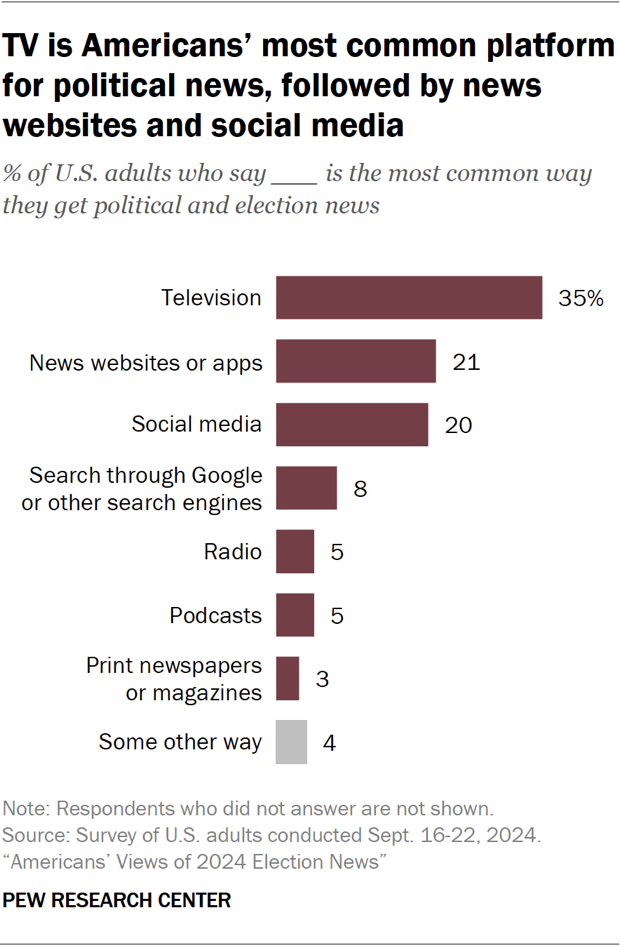
About a third of U.S. adults say television is the most common way they get political and election news (35%), while roughly one-in-five each most commonly get it from news websites or apps (21%) or social media (20%).
Smaller shares turn primarily to search engines like Google (8%) or to radio or podcasts (5% each). And just 3% of U.S. adults say print newspapers or magazines are their most common way of getting election news.
The platforms Americans use for election news differ by age
Different age groups turn to these platforms at drastically different rates.
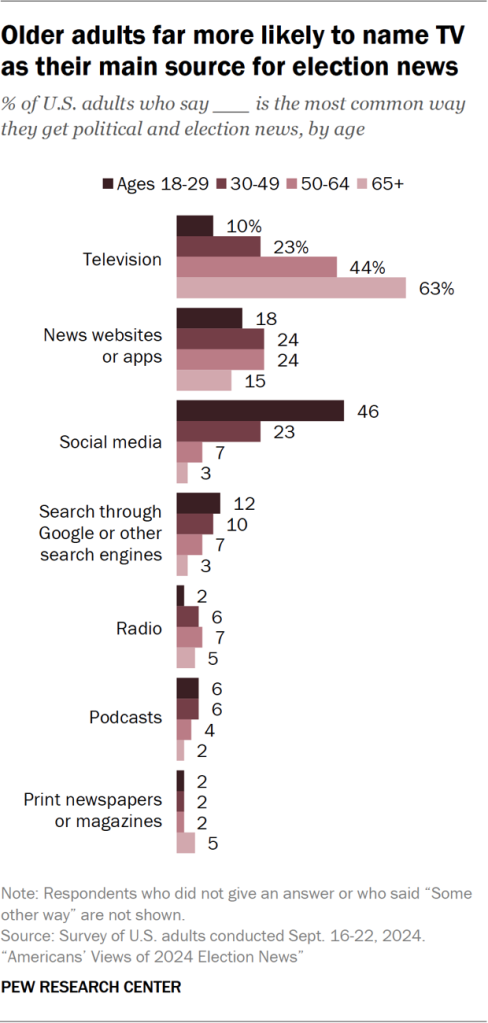
Almost half of U.S. adults under 30 (46%) most commonly use social media for political news. This is twice the share of 30- to 49-year-olds who say the same (23%). And it far surpasses the small shares of those ages 50 to 64 (7%) and 65 and older (3%) who primarily use social media in this way.
Older adults are far more likely than their younger counterparts to say TV is their most common way of getting political news. TV is the most common source of political news for the majority of Americans ages 65 or older (63%). By comparison, just one-in-ten adults under 30 say TV is their primary source for this type of news.
Americans ages 30 to 49 have the most varied habits when it comes to election news. People in this group are about equally likely to say they get most of their election news from TV (23%), social media (23%) and news websites or apps (24%).
Republicans and Democrats are mostly similar in which platforms they use for political news. For example, about a third of Republicans and Republican leaners get political news from television (34%), identical to the share of Democrats and Democratic leaners who say the same.
Which news organizations Americans turn to for election news
The survey also asked respondents whether they use eight specific news outlets (or groups of outlets) as major or minor sources of political and election news. For most of these outlets, the share of Americans who use each for political news has remained largely steady since we last asked these questions ahead of the 2020 election.
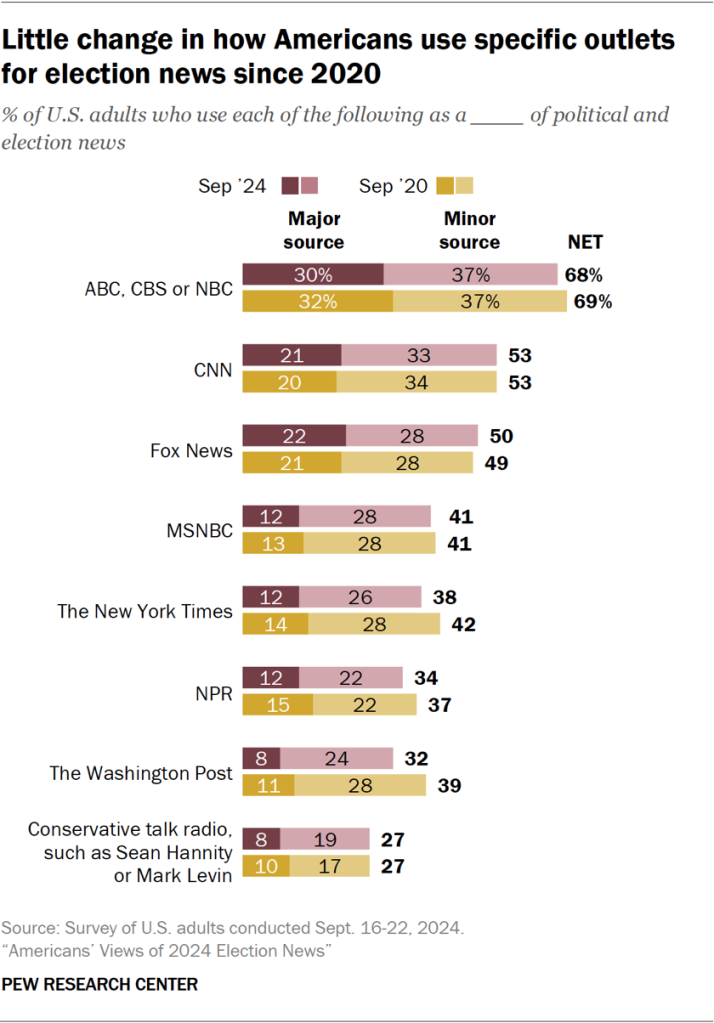
Network television news remains the most widely used of these sources: 68% of Americans say ABC, CBS or NBC is at least a minor source for election news, including three-in-ten who name this as a major source.
About half of U.S. adults use CNN (53%) or Fox News (50%) as a major or minor source of political news, while about four-in-ten say the same about MSNBC (41%).
Both The New York Times (38%) and The Washington Post (32%) remain sources of election news for many Americans, although the shares who turn to these traditional newspapers have declined modestly since 2020 (from 42% and 39%, respectively).
About a third of Americans name NPR (34%) as at least a minor source of election news, while 27% use conservative talk radio, such as Sean Hannity or Mark Levin (27%). The share who cite talk radio as at least a minor source of election news is identical to 2020, when the question named Rush Limbaugh as an example before his death in 2021.
How election news sources differ by political party
Republicans and Democrats differ substantially in the rates that they use all eight major news brands our survey asked about to get political and election news.
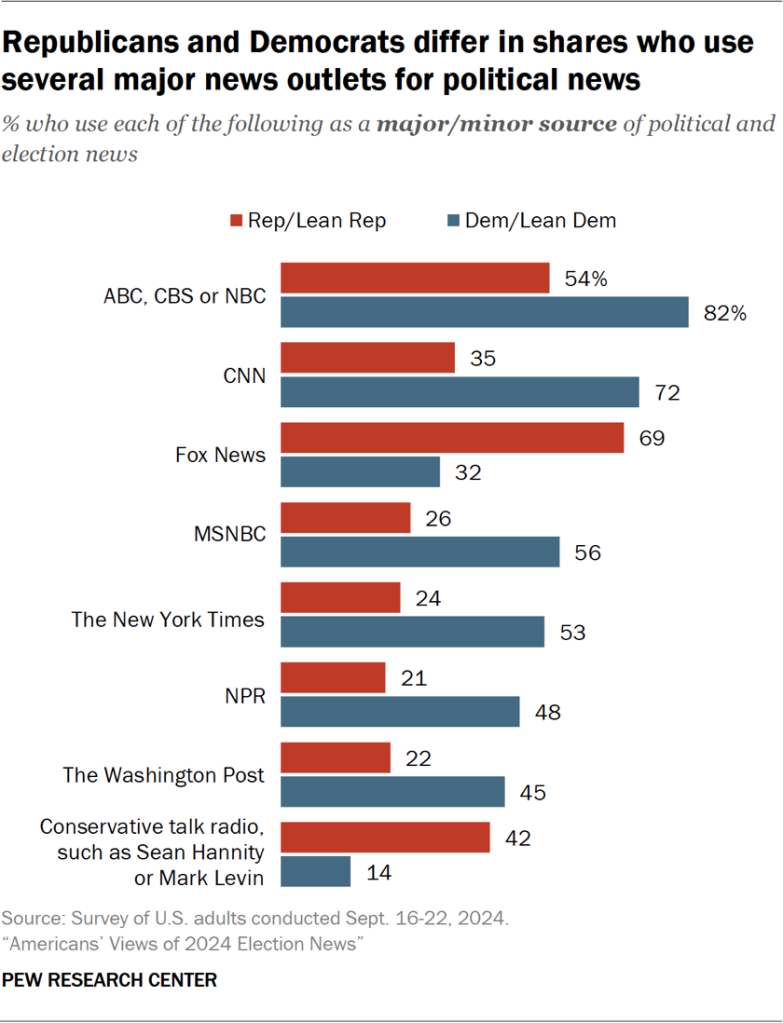
Two of these sources – Fox News and conservative talk radio – are much more commonly used by Republicans. For example, while 69% of Republicans say Fox News is at least a minor source of political and election news for them, only 32% of Democrats say the same.
But Democrats are more likely than Republicans to use each of the other six sources, ranging from cable networks like CNN and MSNBC to network TV channels, legacy newspapers and NPR.
For instance, 48% of Democrats say they use NPR as a major or minor source of election news, compared with 21% of Republicans.
Age differences within the parties
Younger Republicans are less likely than their older GOP counterparts to say they use both Fox News and talk radio as sources for political and election news.
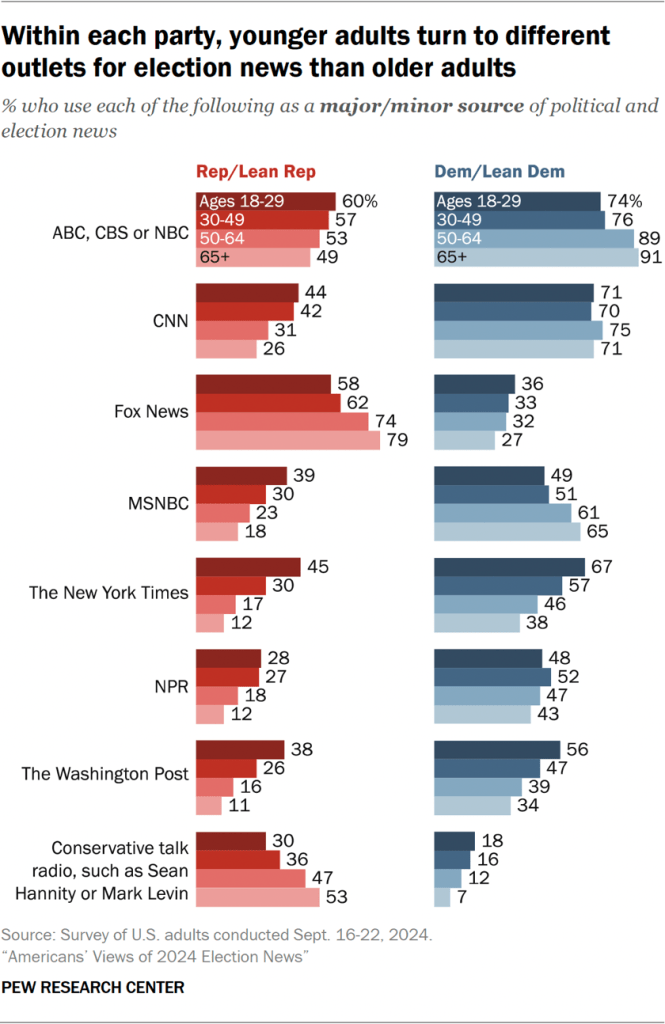
For example, about six-in-ten Republicans under 30 (58%) say Fox News is at least a minor source of election news for them, compared with almost eight-in-ten Republicans ages 65 or older (79%) who say the same.
By contrast, younger Republicans are more likely than older Republicans to use several other sources, including The New York Times, The Washington Post and CNN.
Younger Democrats also are more likely than older Democrats to use The New York Times and The Washington Post as major or minor sources of political news during this election year. For instance, two-thirds of Democrats under 30 say they use The New York Times, compared with just 38% of Democrats ages 65 and older.
Compared with their elders, younger Democrats are less likely to use the network TV stations or MSNBC as sources of election news – in line with the broader pattern that older Americans are more likely to name TV as their most common source for such news. But Democrats of different age groups use CNN as a source of election news at nearly identical rates.




